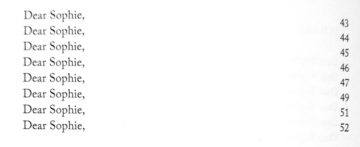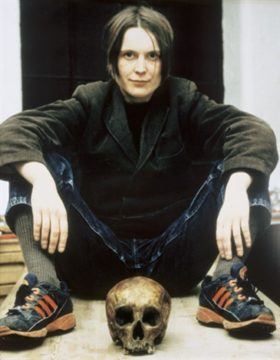by Rafaël Newman
 Mourning is in season. Newspapers of record these days publish interactive mass obituaries, images of “ordinary” people fallen to “the opioid crisis” or to Covid-19 (the front page of the Sunday New York Times was recently riven down the middle by a monolith composed of thousands of dots, growing denser towards the base, each representing a victim of the virus: the whole reminiscent of the graphic tributes to 9/11). The inauguration of the US president in January featured, in lieu of most spectators, ranks of flags, symbolizing the past year’s losses. The annual observation of International Holocaust Remembrance Day in Germany, held this year as for the past quarter century on January 27 at the Reichstag in Berlin, featured a remarkable ceremony marrying reconciliation with the starkest grief. In his latest book, the memoir-cum-poetics Inside Story, Martin Amis eschews his characteristic charades in a sincere and extended eulogy for Saul Bellow, Philip Larkin, and Christopher Hitchens, three of the central figures in the author’s professional and affective life. And, 15 years after it first appeared, The Year of Magical Thinking, Joan Didion’s essay on death and bereavement, persists on various bestseller lists.
Mourning is in season. Newspapers of record these days publish interactive mass obituaries, images of “ordinary” people fallen to “the opioid crisis” or to Covid-19 (the front page of the Sunday New York Times was recently riven down the middle by a monolith composed of thousands of dots, growing denser towards the base, each representing a victim of the virus: the whole reminiscent of the graphic tributes to 9/11). The inauguration of the US president in January featured, in lieu of most spectators, ranks of flags, symbolizing the past year’s losses. The annual observation of International Holocaust Remembrance Day in Germany, held this year as for the past quarter century on January 27 at the Reichstag in Berlin, featured a remarkable ceremony marrying reconciliation with the starkest grief. In his latest book, the memoir-cum-poetics Inside Story, Martin Amis eschews his characteristic charades in a sincere and extended eulogy for Saul Bellow, Philip Larkin, and Christopher Hitchens, three of the central figures in the author’s professional and affective life. And, 15 years after it first appeared, The Year of Magical Thinking, Joan Didion’s essay on death and bereavement, persists on various bestseller lists.
Public commemoration of the dead famously deploys performative language – that is, it accomplishes what it sets out to do simply by its enunciation. Thus Pericles, in Thucydides’ reconstruction of his funeral oration during the Peloponnesian War, and Lincoln, in his Gettysburg Address, perform the unity of their respective “peoples” by eulogizing battle dead; while the institution of the cenotaph, the tomb of the Unknown Soldier, is such a central feature of the performance grammar of national identity that, according to Benedict Anderson, there is no need to specify the provenance of the particular “ghostly national imaginings” with which each discrete tomb is “saturated”. The grave itself has become an eloquent “speech act”.
Passerine, by Kirsten Luckins (Bad Betty Press, 2021, 89 pp.), a collection of some 50 pieces – prose poems, fragments, half-rhymed quatrains, concrete poetry – does not explicitly announce itself as an act of mourning, public or otherwise: except in the birth and death dates supplied for its dedicatee, “Sophie Cannet 1975—2016”, who is also the addressee of all of the collected texts, each given a salutation – “Dear Sophie” – as its identical title. Nor is the book’s claim, as eulogistic performance, on a particular spatial realm (a nation or a sacred precinct), but rather – with its epistolary verses each dated in sequence, from 30th May to 30th May in an unspecified 12-month cycle, an average of one per week – Passerine stakes out the temporal dimension. It is the account of a year, not of magical thinking, but of implicit reflection on the imbrication of life and death: or rather – because, as Martin Amis reminds us in his book of mourning, “death” is merely an absence, while our getting there is among the undeniable, inevitable processes of our existence, the passage experienced by both mourner and mourned – on the radical symbiosis of living and dying.
What ensues is a record of the observations made by a mourner newly awakened to a world in which her friend’s absence has begun to call for a response – because, as Luckins has said about her poetic process, she felt that the friend with whom she had shared certain of these observations during her lifetime still “might turn up”. Chief, and ubiquitous, among the transient, naturally recurring elements with which Luckins illuminates her calendar of grieving are clouds. “The clouds today are high and scant,” begins the first poem in the collection, “a promise / of heat haze and pollen count.” The slant rhyme – “scant/count” – is as programmatic as the line’s Wordsworthian protagonist and announces Luckins’s ease with tradition in both form and content. (There are echoes of several distinguished predecessors throughout the collection, all treated with the lightest of touches; lines by Tomas Tranströmer are intercalated verbatim, and acknowledged in the collection’s single footnote.) Clouds in Passerine are variously “storm-leavings,” “trailing fronds” and “precarious heaps” – and one, in a joyful, Hopkins-flavored exclamation, mounts a gaudy aerial performance:
This cloud! explosion! silk in the sky!
Clouds are an apt figure for the demonstration of the interconnection of living and dying, pregnant as they are with the nourishment of carbon-based life on Earth – rain – whose expulsion signals their demise. And as such – in their signification of the nexus of generation and decay – clouds also serve as the celestial correlative to Passerine’s other great motif, mothers, and death; indeed, the dying mother. “All our mothers are afraid of dying,” she writes in the collection’s first poem, on 30th May, entitled, like all of the subsequent texts, “Dear Sophie”; and she goes on, on 10th July, to observe a mother’s hair turning white; on 12th August, to recall a mother relieved of her nursing baby, so that she can “poison [her] breast milk with meds”; on 20th October, to regret a mother whose “body evicted [her] nightly / at the end of a cattle prod”; and on 18th January, to summon the memory of a mother in hospital, gazing at her child in another’s arms after “trying to nurse him.”
 This mother – if not every single mother mentioned in Passerine – is the collection’s repeated addressee, the Sophie whom Luckins mourns, the Sophie survived by the son Passerine occasionally seeks to amuse and comfort with near-nonsense verse, the friend Luckins has lost to illness and to whom, she has said in an interview, she decided to write a series of epistolary poems over the course of a year: poems with a recurrent cloud motif, perhaps in recognition of Sophie’s itinerant life as a performer. On one occasion, on 8th June, the poet is found in remembered communion with Sophie as the two gaze up at the sky:
This mother – if not every single mother mentioned in Passerine – is the collection’s repeated addressee, the Sophie whom Luckins mourns, the Sophie survived by the son Passerine occasionally seeks to amuse and comfort with near-nonsense verse, the friend Luckins has lost to illness and to whom, she has said in an interview, she decided to write a series of epistolary poems over the course of a year: poems with a recurrent cloud motif, perhaps in recognition of Sophie’s itinerant life as a performer. On one occasion, on 8th June, the poet is found in remembered communion with Sophie as the two gaze up at the sky:
Once we lay together on our backs, on the summer grass in Heaton Park, and the watching-together of the overhead clouds was a being-with. Each other. Pain. Guilt. Your womb a nest made of bird-bones, hollow and feather-light as a brown passerine.
Here, for a moment, Luckins summons another poetic ancestor, of far greater antiquity than the Modernist Joyce of her yellow-press pastiche on 23rd April, or the Beatnik Burroughs, listed among the recipients of burial gifts on 31st October. For all that she mocks and disavows the classics (“It’s all Greek to / me” she says on 11th June, of Linnaean classification: having requested to be shot, on 9th June, “If I ever use the word petrichor”), the collocation of mourning, a beloved friend, and a bird inevitably echoes the passer or “sparrow” poems of Catullus.
In two canonical odes, the Roman poet celebrates, and then laments in mock elegiac tone, his beloved Lesbia’s pet bird or passer, which has brought her such pleasure, and which has died:
Mourn, goddesses and gods of love,
and any not immune to charm:
my girlfriend’s passer pet has died,
the sparrow she delighted in,
and loved more than she loved her eyes.
For it was sweet, and knew its mistress
as well as girls might know their mother…
There is a convention among philologists, aroused by Catullus’s notoriously libertine manner elsewhere in the corpus, to read the passer in these lines as a figure for the lovers’ erotic play: indeed, as a coy symbol of their genitalia, in various states of excitation and quiescence. More significant in the context of Passerine, of course, is simply Catullus’s assembly of birds, death, and mothers. “Dear Sophie” is a dying mother, whose womb is “a nest made of bird-bones, hollow and feather-light as a brown passerine”, at once a cenotaph and a site of generation, a proleptic memorial to the entire cycle of life that will proceed from it, and return to it: “Years ago in our futures,” as Luckins writes on 6th August. What is to come is inscribed in what has been, and vice versa.

This is a far cry from the nihilistic collapse of nascence and demise enacted by Beckett, in Pozzo’s formulation: “They give birth astride of a grave, the light gleams an instant, then it’s night once more.” Nor is it a giving-birth-to-death that Luckins stages, as in a Sarah Lucas tableau. Instead, Passerine re-enacts, reverses, and embellishes a celebrated trope of John Donne’s, from the high era of the memento mori: rather than Donne’s “Valediction: Forbidding Mourning,” in which the poet consoles his lover on departure with the promise of their continuing metaphysical union, Luckins gives us mourning free of valediction: literally, in the conventional epistolary sense, since each of the collection’s poems begins with a salutation – “Dear Sophie” – but lacks the corresponding valediction; and thus recognizes the ritual importance of grief, while resisting the stenographic finality of formal closure. All without lapsing into melancholia, the risk of the bereaved who cannot relinquish the mourned object: because by publishing Passerine, Luckins has indeed released hers.
In a poem near the end of the book, on 31st March, Luckins gives explicit voice to the project of (re)uniting dying mothers with their progeny in an unending round. “May the mothers be happy. / May the pregnant be happy. / May the broody be pregnant”, she writes, and raises what Linda France, one of the collection’s several “endorsers”, calls “a prayer of incantation,” a wish “for some transformation to occur”:
May the mothers be excused from motherhood.
May the mothers love their dead.
May the dead mothers be kissed upon their gravestones.
May the mothers be many other things.
May the children be released.
May the children be released indeed: into a world of living, and dying, and singing. A world in which Passerine has allowed us to spend a mournful, exuberant year.
